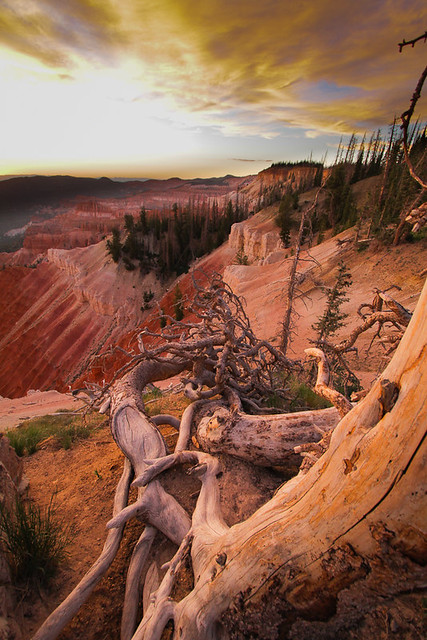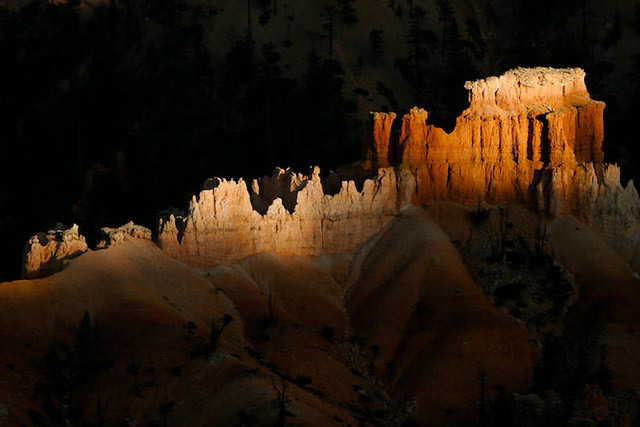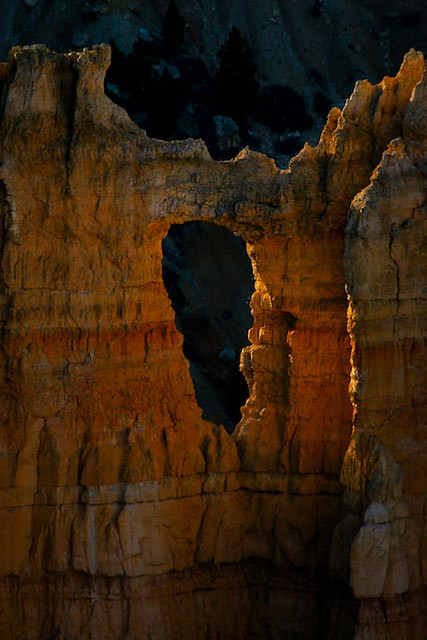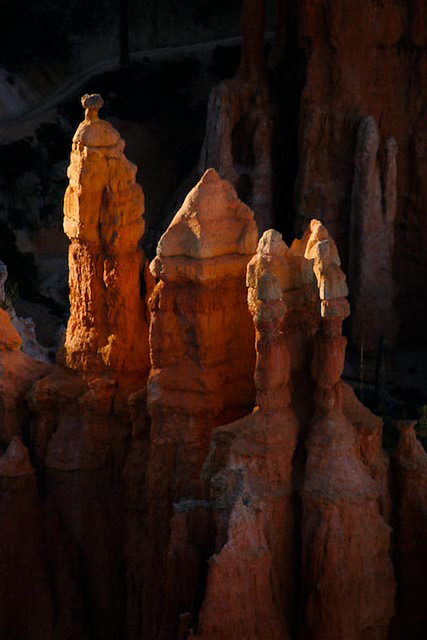There is no question that I love Photoshop Lightroom 3. There is just so much that you can do to improve your images. I find that I can come close to matching
the image I produce with the
image that I envisioned at the time I captured it. I am not one who believes that you need to improve on nature necessarily but lets face it, no film or digital sensor can record what your mind sees when you look at a scene. Similarly, any woman looks better with just a little make-up. (Boy, am I in trouble now.) In Photography, just like with women, the trick is to apply just enough enhancement that it improves the presentation but doesn't become the subject itself.
My case in point is this image of Cedar Breaks National Monument. Cedar Breaks has got to be one of the most beautiful locations in Utah if not the world. Unfortunately, no film or sensor can accurately record the depth of color or the range in exposure that is available in each scene. The human eye and brain combine to create and image in the mind that is impossible to record on any medium known to photographers. However, with the use of computers and software, an image can be manipulated until it mimics what is seen in the minds eye.
below is an image that I captured this fall on a visit to Cedar Breaks. It is not a bad shot but does not approach the vision that I had in my head.
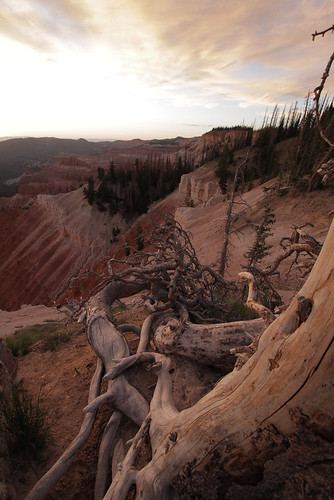
Using Photoshop Lightroom 3, I was able to take this same digital capture, apply a
graduated neutral density filter (darkening the sky),
turned up the exposure (lightening the rest of the photo),
increased the saturation (deepening the colors) and
vignette (darken) the corners a little. The resulting image below is very close to what I saw, in my mind, when I walked up to the edge of the canyon and took in the beauty that was presented before me.
